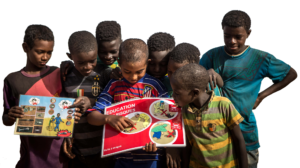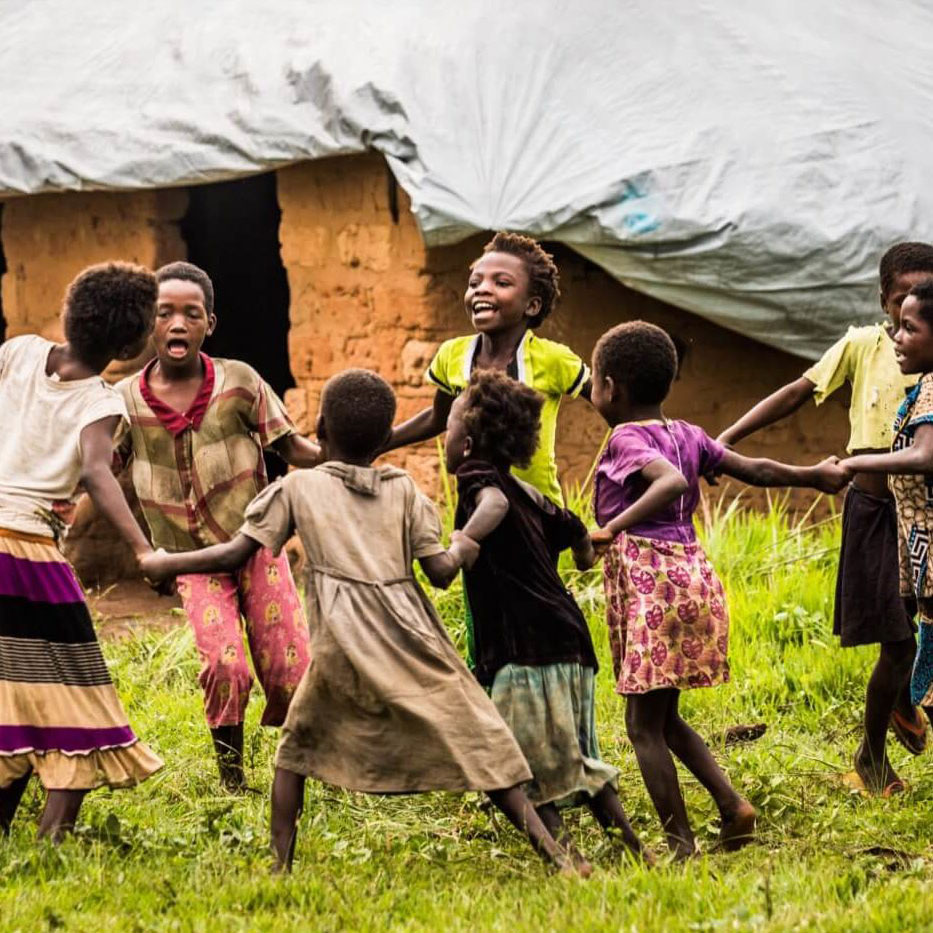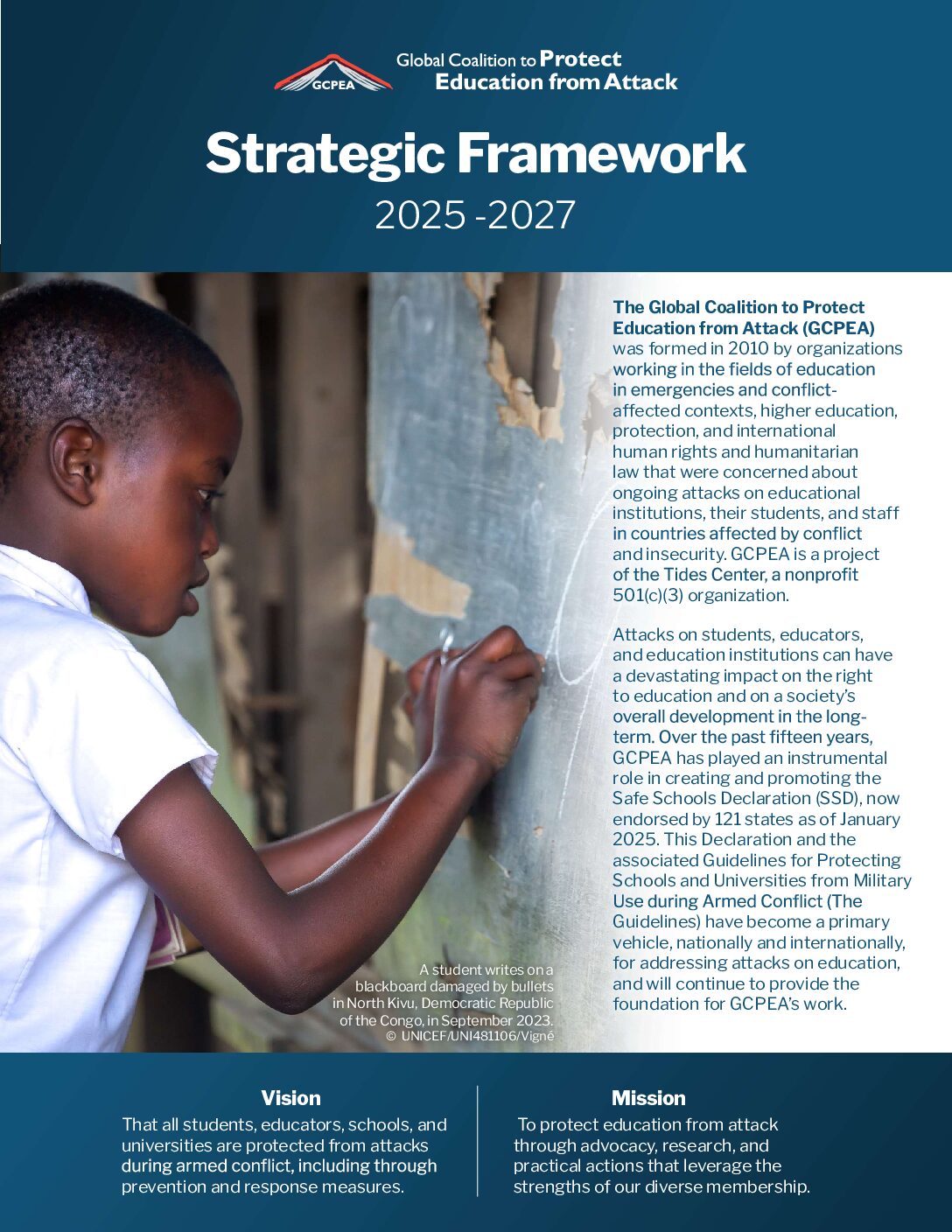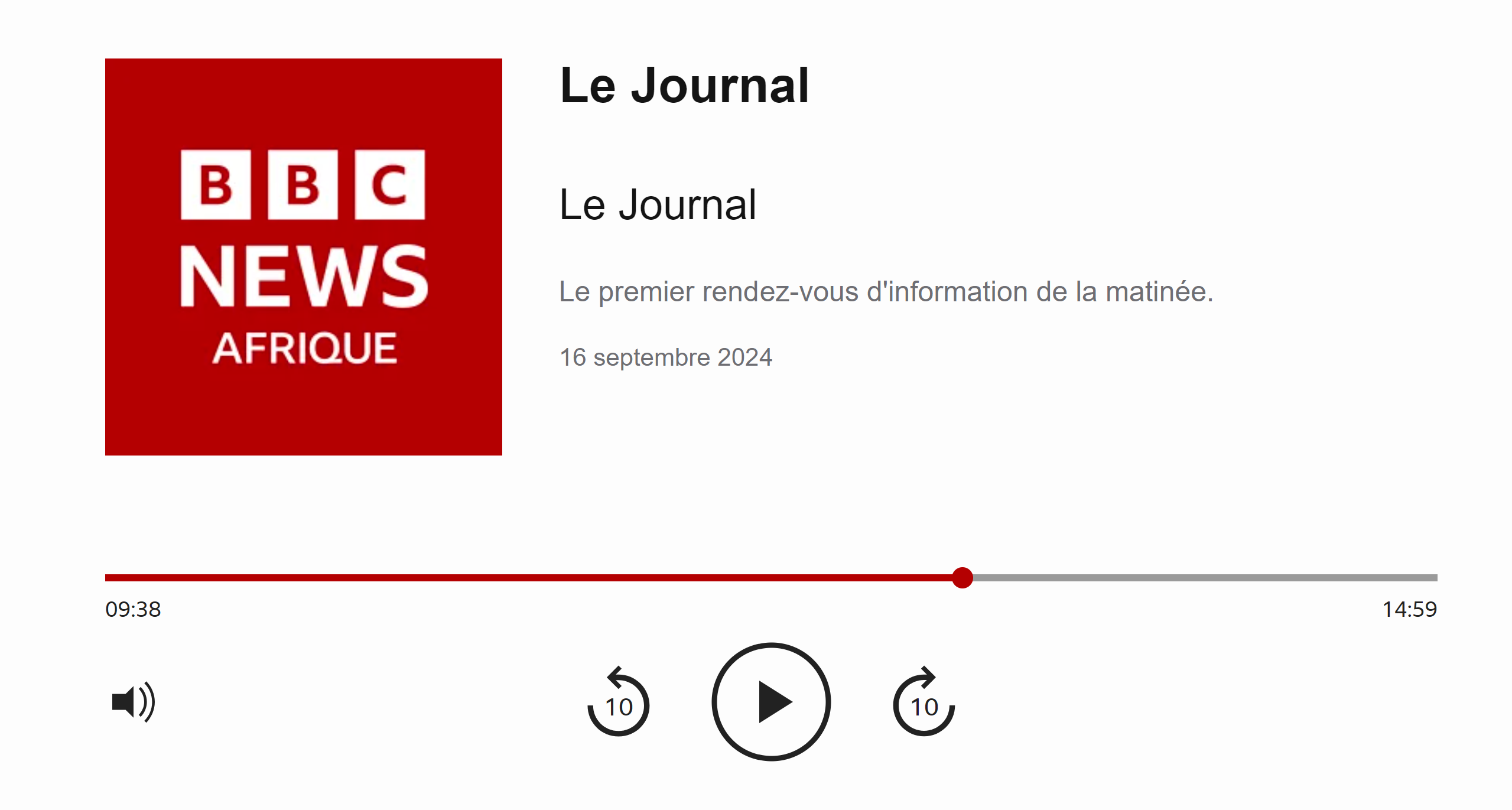GCPEA News
Colombia Should Support Safe Schools Globally
El Espectador, March 10, 2017
By Cristal Downing*
Originally published in Spanish in El Espectador: https://www.elespectador.com/opinion/colombia-deberia-apoyar-las-escuelas-seguras-al-nivel-global-columna-683765
“And now we can go to school!” declared 10-year-old “Pablo,” taking off his cap and using it to gesture towards the small cement and wood structure across the yard. Grabbing me by the hand, he pulled me off the covered patio into the pouring rain, over to the three new classrooms awaiting their first students.
It was March 2011, and this village in the Sierra Nevada de Santa Marta mountains on the Caribbean coast of Colombia was being resettled as part of government efforts to support indigenous communities’ return to their ancestral lands. Security conditions had recently improved, and several new villages were being built in the lower parts of the Sierra, from which the communities had been displaced due to conflict-related violence years before. Each village had a health facility and school. Children who had previously had to walk for hours to get to school from their displaced communities high in the Sierra now found their education just across the yard. This, and the decreasing violence in the area, were reasons for hope for Pablo and his companions.
A year and a half later, in September 2012, the Colombian government announced that it had begun dialogues with the Revolutionary Armed Forces of Colombia (FARC), imbuing conflict-affected communities all over the country with further optimism and anticipation. The final peace agreement in November 2016 ushered in a new phase in Colombia’s turbulent history.
What do these changes mean for children like Pablo whose education was interrupted by the conflict? The Global Coalition to Protect Education from Attack found that several schools in Colombia were either the intended or accidental targets of attack between 2009 and 2013, and illegal armed groups threatened hundreds of teachers, as well as university students and professors, during the same time. These groups also reportedly recruited children from, and on the way to, school, and documentation from international agencies indicated that parties to the conflict occupied education facilities.
Despite these challenges, the Colombian government has done a great deal to continue and strengthen the provision of education in challenging contexts, as well as to prevent and respond to attacks and other violence that directly impact schools, students, and teachers. Particularly commendable are the safety and security planning mechanisms and conflict-sensitive education policies introduced by the Ministry of Education, as well as some of the world’s most robust military orders prohibiting the use of education facilities by the armed forces. Child recruitment, which occurs both in and outside schools, has also been addressed by both a FARC announcement in February 2016 that it would stop recruiting children, and by the final peace agreement.
To solidify this commitment to protecting students and education, and to highlight Colombia’s efforts and encourage their replication elsewhere, the next step is for the Colombian government to endorse the international Safe Schools Declaration. This Declaration lists concrete actions that governments can take to prevent and respond to attacks on education, including many measures that Colombia has already implemented. The Declaration also commits states to use a set of guidelines aimed at curtailing the use of education facilities by armed forces and non-state armed groups.
In the context of the current historic transition to peace, this endorsement would be a significant symbolic commitment through which Colombia would join a group of 59 other states – among them, countries both in conflict and at peace – which have pledged broad political support to the protection and continuation of education during armed conflict. Norway, which backed the Colombian peace process from its outset, and Argentina – a regional friend of Colombia – jointly led the process that resulted in the Declaration. Other countries that have already endorsed the Declaration include nine others in Latin America, and many others that have supported the peace process in Colombia, such as Spain and the Netherlands.
Colombia has already provided regional and global leadership in several areas of peacebuilding and security; this symbolic commitment to the Declaration would link that leadership to the issue of education and highlight Colombia as an example of how the needs of schools, students, and teachers can be addressed even during conflict. The Global Coalition to Protect Education from Attack believes that Latin America should be the first region in the world in which all countries have endorsed the Declaration, especially given the opportunity to announce endorsement at the Second Safe Schools Conference in Buenos Aires on March 28-29. Colombia’s commitment would be a significant motivation for other states in the region to follow.
Just a few weeks ago, students in the Sierra Nevada de Santa Marta and all over Colombia started the new academic year. Their government’s endorsement of the Safe Schools Declaration would reflect the efforts it has already made to ensure that their schools are safe spaces for learning, and would crystalize its commitment to strengthening the protection of schools during the transition to peace.
*Cristal Downing is a Program Officer at the Global Coalition to Protect Education from Attack




